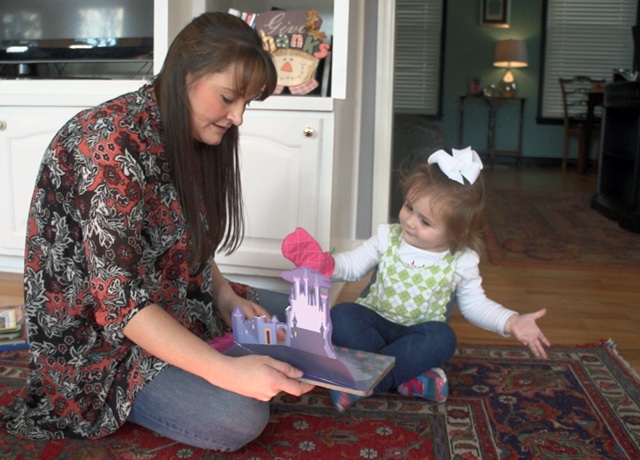This post has been updated to reflect new data. It was originally published June 29, 2021.
In 2020, we reported that families who participated in LENA Start showed elevated language skills one year after the program. New data suggests there’s strong evidence that those elevated language skills endure for the longer term, at least two years.
LENA’s Developmental Snapshot: The big picture
The Developmental Snapshot is a parent-completed measurement of infants’ and toddlers’ progress in acquiring language skills. Conventional assessments are generally long, dependent on professional evaluation, and difficult to scale for community-wide initiatives. Furthermore, many are not sensitive to monthly changes in language development and/or are screening instruments that don’t provide standard scores or developmental age estimates.
Snapshot’s tight focus on receptive and expressive language skills makes it the ideal assessment to measure large-scale, relatively short parent-directed programs such as LENA Start and LENA Home, as well as major research projects. For a more in-depth look at the tool, LENA researchers’ peer-reviewed study of the Developmental Snapshot was published in 2016.
Relative to what older children and adults experience, the growth that infants and toddlers undergo in short spans of time can be dramatic. They often knock out milestone after milestone at a dizzying pace. There are the motor-skill milestones, things like rolling over and walking. And there’s the physical growth, things like height and weight. These are among the milestones that dictate so many practical matters — height and weight affect car seat positioning, for instance. That means they’re more likely to be top of mind for many parents. They’re also easy to measure.
Less likely to be top of mind is keeping track of language skill development — especially outside the often fuzzy milestone of a baby’s “first word.” That’s understandable, since language development markers are often subtle, especially when a baby is still preverbal. However, it’s very important that parents not mistake “subtle” for “trivial.”
The growth that a preverbal baby’s brain experiences may be hidden to anyone who doesn’t have ready access to an MRI machine. But that growth is happening. And it’s important for parents to be able to know it’s happening at a proper pace. That’s what the Developmental Snapshot provides.
Developmental Snapshot results: Two years after LENA Start
LENA’s research team follows up with LENA Start participants regularly, asking them to submit new Developmental Snapshots. This gives us insight into how LENA Start may impact children’s language development over the long run. The first follow-up occurs approximately one year after the family begins the program. Subsequent follow-ups occur every six months.
The two-year analysis is particularly encouraging when we look at children whose baseline Developmental Snapshot scores fell below the 25th percentile, meaning that they were at risk for language delays before their family began the LENA Start program. Two years later, the gains they saw immediately after the program ended have stayed in place. In fact, their scores have continued to rise at a quicker-than-average pace. That’s a testament both to the quick burst of growth they achieved during the program itself and to the resiliency of their parents, who took the program’s lessons to heart and have held their focus on the importance of early language development and conversational turns.
“When we first created and reported on the Snapshot, we knew we’d want to take the next steps of examining its sensitivity to the effects an intervention like LENA Start provides,” said Dr. Jill Gilkerson, LENA’s Chief Research and Evaluation Officer. “These results are very encouraging, both for the validity of the Developmental Snapshot and for the effectiveness of LENA Start. I am most excited for what the results say about children who began the Start program at risk for language delays.”
LENA Start has proved especially beneficial for children who started the program experiencing extreme language delays, with Snapshot scores in the 1st percentile. At graduation, their Snapshot standard scores had risen an average of 37%, moving them from the 1st to the 10th percentile. These score increases were six times greater than those of children who started in the 25th percentile or higher. And what’s more, along with their dramatic Snapshot increases came corresponding increases in conversational turns.
We’re beginning to see how LENA Start, a program that lasts just a couple of months, can continue yielding benefits for the longer term. The early years are so vital. We already know, for instance that an 18 month old’s language environment is predictive of their IQ score 10 years down the road and that conversational turns promote brain growth and aid socioemotional development. That’s part of why we get excited whenever we see hard evidence that the impact of our programs endures for a longer span of those early years.
We often say that improving early language environments is among the most cost-effective and efficient ways to improve long-term outcomes in children. It’s not hard to see how that efficiency rises alongside the durability of our programs’ benefits.



